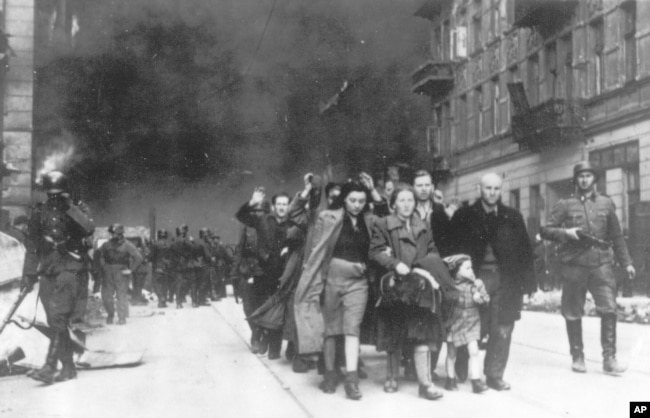Almost 80 years after the Holocaust, about 245,000 Jewish survivors are still living across more than 90 countries.
A new report found that 49 percent of them are living in Israel. Eighteen percent live in Western Europe, 16 percent in the United States, and 12 percent in countries of the former Soviet Union.
The Conference on Jewish Material Claims Against Germany, also called the Claims Conference, which is based in New York City, carried out the study.
Before the publication of the report, there were only general estimates about how many Holocaust survivors are still alive.
Their numbers are quickly falling. Most are very old and often in poor health, with a median age of 86. Twenty percent of survivors are older than 90, with more women (61 percent) than men (39 percent) still alive.
The report is called “Holocaust Survivors Worldwide. A Demographic Overview.” It says 96 percent of survivors are “child survivors.” That means they were born after 1928. Information in the report is based on numbers collected up until August 2023.
“The numbers in this report are interesting, but it is also important to look past the numbers to see the individuals they represent,” said Greg Schneider. He is the Claims Conference’s executive vice president.
Six million European Jews and people from other minorities were killed by the Nazis and their supporters during the Holocaust.
It is not clear exactly how many Jews survived the Holocaust. But their numbers were far smaller than the Jewish population in Europe before World War II. 3.3 million Jews lived in Poland in 1939. Only about 300,000 survived.
About 560,000 Jews lived in Germany in 1933, the year Adolf Hitler came to power. At the end of World War II in 1945, their numbers had fallen to about 15,000 — through emigration and murder.
Germany’s Jewish community grew after 1990. More than 215,000 Jewish migrants and their families moved to Germany from countries of the former Soviet Union. Some of them were also survivors. The report said that 14,200 survivors still live in Germany.

One of them is Ruth Winkelmann. She survived by hiding with her mother and sister in a garden shed in northern Berlin. Her father was killed in the Auschwitz death camp. Her younger sister Esther died of illness, hunger, and exhaustion in March 1945, just weeks before the Soviet Red Army entered Berlin.
Winkelmann is 95 and still lives in Berlin. She said there has not been a day in her life when she did not remember her father.
For its new report, the Claims Conference said it defined Holocaust survivors “based on agreements with the German government in assessing eligibility for compensation programs.”
For Germany, that definition includes all Jews who lived in the country from January 30, 1933, when Hitler came to power, to May 1945. That is when Germany surrendered in World War II.
The group deals with claims for Jews who suffered under the Nazis and negotiates compensation with Germany’s finance ministry every year. Since 1952, the German government has paid more than $90 billion to individuals for suffering and losses resulting from the Nazis.
The Claims Conference has also launched several educational projects to pass on survivors’ stories to younger generations.
Gideon Taylor is president of the Claims Conference. He said the data the group gathered “not only tells us how many and where survivors are, it clearly indicates that most survivors are at a period of life where their need for care and services is growing.”
“Now is the time to double down on our attention on this waning population. Now is when they need us the most.”
I’m Dan Novak.
Kirsten Grieshaber reported this story for the Associated Press. Dan Novak adapted it for VOA Learning English with additional materials including the report.
_______________________________________
Words in This Story
emigration –to leave a country to live somewhere else
shed — n. a small building mainly used for storage
exhaustion — n. a condition of being very tired
eligible — adj. to be able the receive or do something
compensate — v. to provide something of value especially for someone’s hardship or difficulty
double down — v.to continue to do something in a more determined way
wane — v. to become less, smaller, or less strong over time
